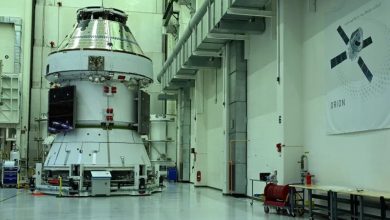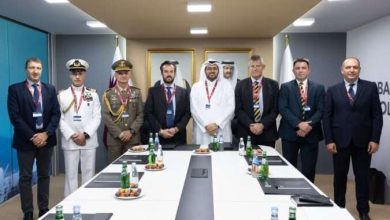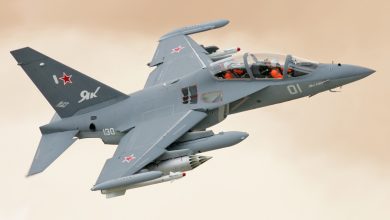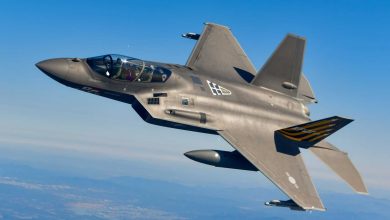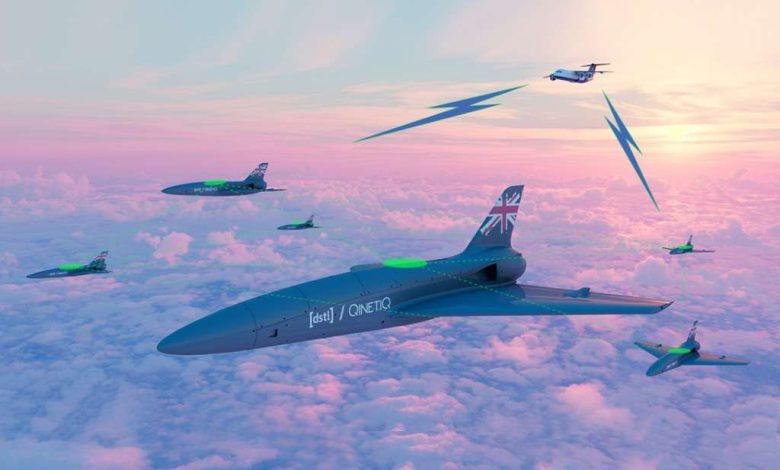
“QinetiQ Pioneers the UK’s Inaugural Jet-to-Jet Alliance: Uniting Aircraft with Autonomous Drones”
QinetiQ has successfully conducted the UK’s premier Crewed-Uncrewed-Teaming demonstration involving a piloted aircraft alongside an autonomous jet drone.
The demonstration – carried out in partnership with the Defence Science and Technology Laboratory (Dstl), the Royal Navy, and the Air and Space Warfare Centre (ASWC) – involved a QinetiQ jet taking off from the Ministry of Defence (MOD) facility at Boscombe Down in Salisbury, concurrent with a modified Banshee Jet 80 drone’s launch from the MOD Hebrides range, situated off the north-western coast of Scotland.
Transitioning from Boscombe to the Hebrides, the aircraft swiftly established command over the Banshee, with the drone receiving instructions from the aircraft prior to autonomously executing the mission, flying at a speed of 350 knots.
The operation was successfully performed not only by the live Banshee but also by several digital Banshees within a live-virtual swarm, demonstrating effective coordination.
Equipped with QinetiQ’s Airborne Command and Control for Swarm Interoperable Missions (ACCSIOM) technology, the Banshee was capable of communicating with the piloted aircraft using the standard NATO Link 16 datalink messaging format. This critical technology supports the deployment of autonomous aerial platforms and offers an airborne gateway that can transmit and interpret both long and short-range communications among drones, while integrated safety systems can intervene to ensure the drone always operates within a designated safe zone.
The triumph of this demonstration showcases the potential for effective integration of Crewed and Uncrewed Teaming between existing frontline combat aircraft and next-gen drones, enhancing combat capabilities in a cost-effective manner.
Alan Hart, Managing Director of Science & Technology at QinetiQ stated: “This groundbreaking trial exemplifies collaboration and technological innovation in aviation defense, as we aim to address the evolving needs of frontline personnel. It marks a major milestone in developing technologies that facilitate seamless operations between uncrewed systems and current aircraft, establishing a foundation for air operations in the coming two decades.”
Minister for Defence Procurement, James Cartlidge remarked: “Our Armed Forces are committed to remaining at the forefront of technology. The ability to integrate crewed and uncrewed systems represents a significant leap forward in harnessing the inherent opportunities presented by drones. With British engineering prowess, this successful trial is a remarkable demonstration of collaborative testing between the MOD and industry – a fundamental principle in our UK Defence Drone Strategy and Integrated Procurement Model.”
Peter Stockel, Dstl’s Head of Robotic and Autonomous Systems, commented: “This inaugural UK event lays the groundwork for mitigating the hurdles toward adopting autonomous systems through enhancing autonomy capabilities that are easier to incorporate while fulfilling regulatory demands. The project has focused on ‘teaming’ throughout, not just for the crewed-uncrewed technologies and their integration, but also as a model of MOD, Dstl, QinetiQ, and various industry collaborators uniting to expedite advanced autonomy research and development for operational superiority through open and flexible methodologies and practical experimentation.”
Commodore Steve Bolton, Deputy Director of Aviation Programmes & Futures, expressed: “I am thrilled with the outcomes of this trial. The evolution of Crewed–Uncrewed Teaming, as part of the Royal Navy’s numerous aviation transformation initiatives, aims to embrace the rise of autonomy and Human Machine Teaming, thereby enhancing our aviation combat capabilities and operational edge at sea.”
This flight trial is a component of the UK’s Accelerating Air Autonomy Capability Experimentation (A3CE) R&D programme, culminating from a year of planning and development efforts by QinetiQ and Dstl, which included a series of synthetic and flight risk mitigation trials, assessments, and evaluations.



